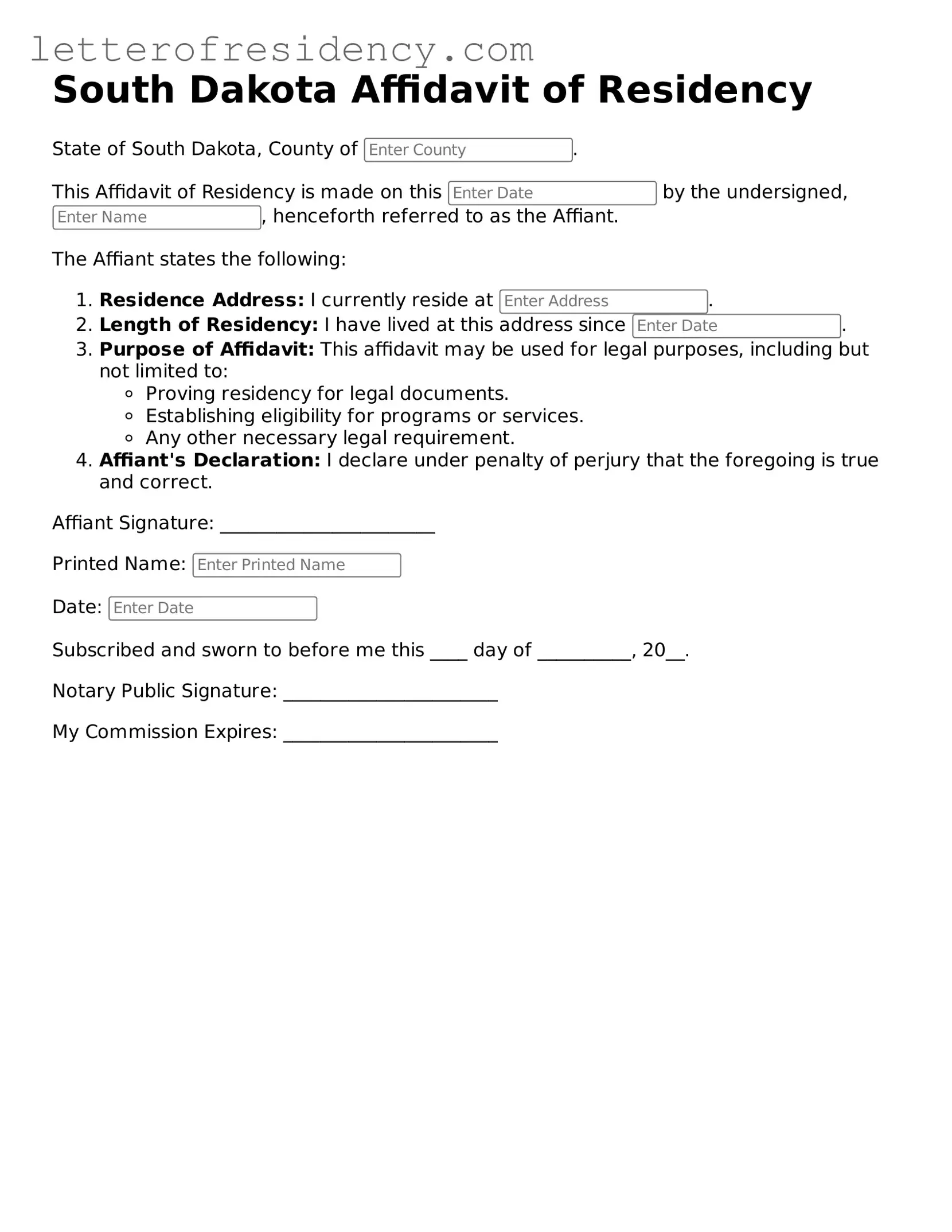What You Should Know About This Form
-
What is the South Dakota Affidavit of Residency form?
The South Dakota Affidavit of Residency form is a legal document that verifies a person’s residence within the state. This form is often required for various purposes, such as enrolling children in school, applying for state benefits, or obtaining a driver's license. By completing this affidavit, individuals affirm their current address and residency status.
-
Who needs to complete the Affidavit of Residency?
Typically, anyone who needs to prove their residency in South Dakota may need to complete this form. This includes new residents, students, and those applying for state assistance or benefits. If you are moving to South Dakota or changing your address within the state, you may also be required to submit this affidavit.
-
How do I fill out the Affidavit of Residency form?
To fill out the Affidavit of Residency form, you will need to provide your personal information, including your name, current address, and date of birth. Additionally, you may need to include details about how long you have lived at your current address. After completing the form, it typically requires your signature, affirming that the information provided is true and accurate.
-
Where do I submit the Affidavit of Residency?
The submission process for the Affidavit of Residency varies depending on its purpose. If you are using it for school enrollment, you would submit it to the school district. For state benefits or driver's license applications, you would provide it to the relevant state agency. Always check with the specific organization to ensure you are following their submission guidelines.
-
Is there a fee associated with the Affidavit of Residency?
Generally, there is no fee for completing or submitting the Affidavit of Residency itself. However, certain agencies or organizations may have their own fees related to processing applications or services that require the affidavit. It’s advisable to check with the specific agency to confirm any associated costs.
